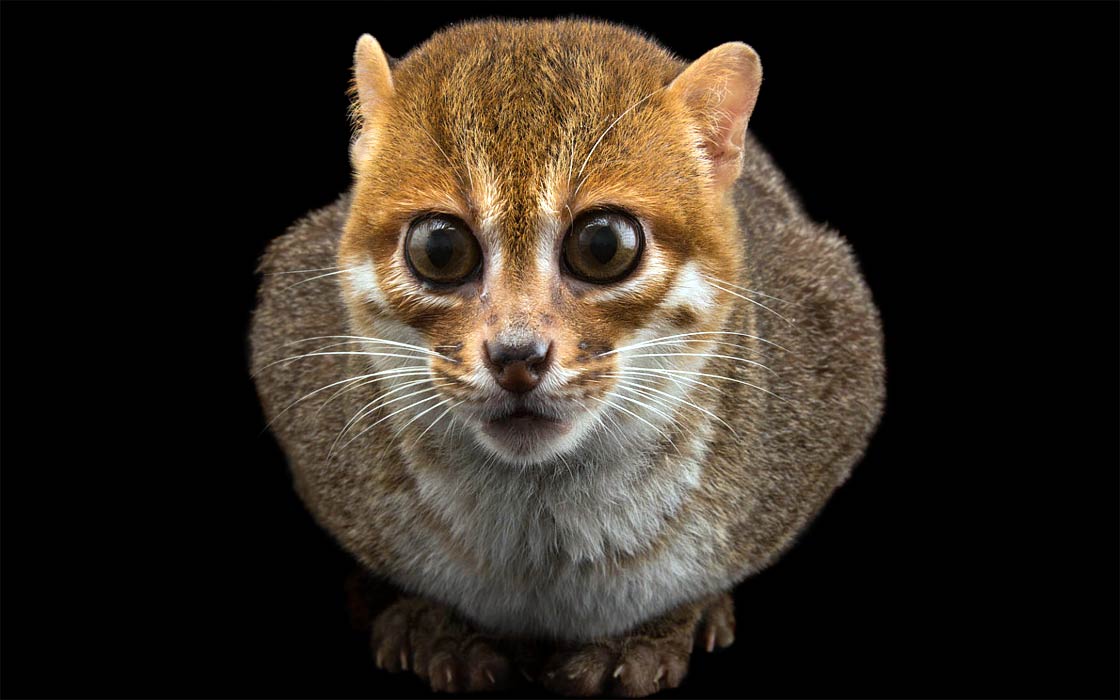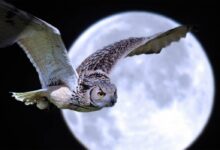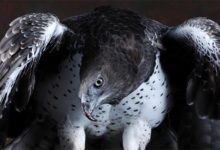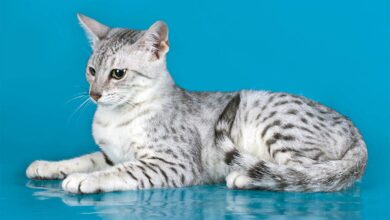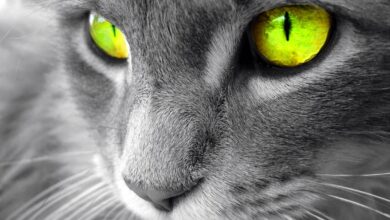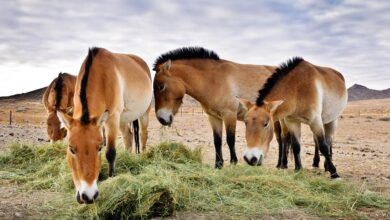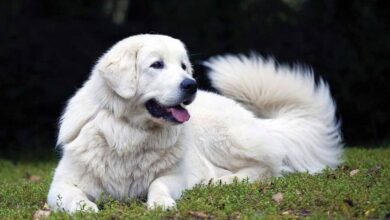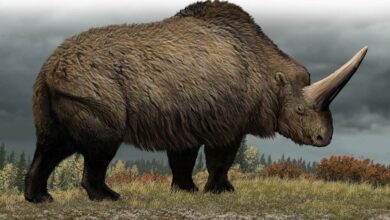Flat-Headed Cat – the Mysterious Feline Swimmer
We all know that cats hate water, right? Yet, deep in the tropical forests of Borneo lives a feline species that thrives in aquatic environments. Meet the flat-headed cat – an animal so rare and enigmatic that it was once thought to be extinct.
The flat-headed cat is a small wild feline native to the forests of the Malay Peninsula, Sumatra, and Borneo. It is one of the world’s most mysterious cats – little is known about it, and only recently have researchers managed to observe it. Tragically, this animal is critically endangered, and scientists fear that without human intervention, its survival may not be possible.
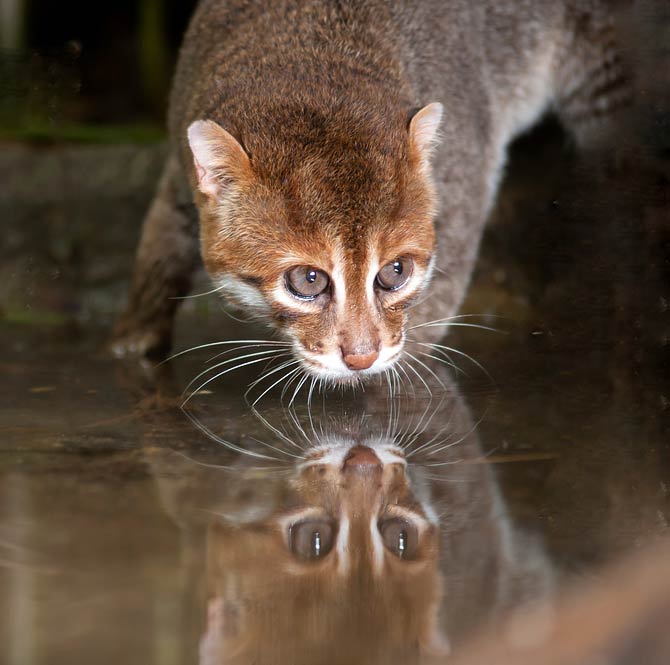
Classification
- Class: Mammalia (mammals)
- Order: Carnivora (carnivores)
- Family: Felidae (cats)
- Genus: Prionailurus
- Species: Flat-headed cat (Prionailurus planiceps)
- Synonyms:
- Felis planiceps
- Ictailurus planiceps
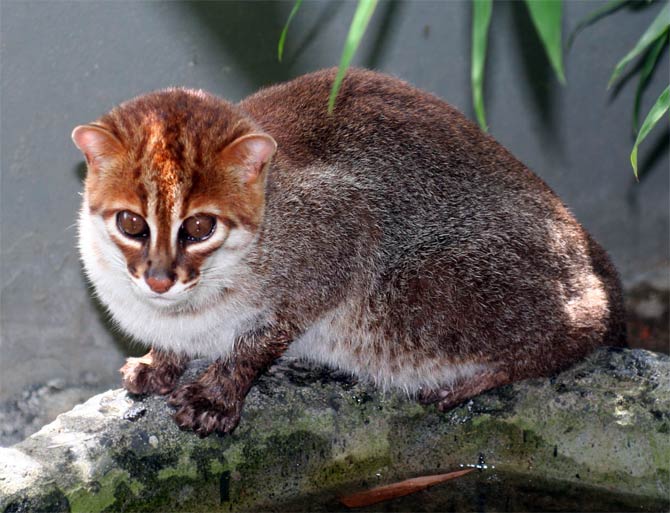
Characteristics
Appearance
The flat-headed cat has an appearance that is very unusual for a feline. Its body proportions make it resemble a weasel at first glance. The animal’s body is slender and elongated. It has an unusually short tail. Another distinctive feature is its legs – they are very short, with toes connected by webbing. It is one of only four cat species whose claws do not retract.
The flat-headed cat is about the size of a small domestic cat. Its body measures 41–50 cm (16–20 in) in length, with an additional tail length of 13–15 cm (5–6 in). Its weight ranges from 1.5 to 2.5 kg (3.3 to 5.5 lbs), with males being slightly larger than females.
The flat-headed cat’s fur is dark brown on its body, legs, and tail, with a dirty white underside. Its head is reddish-brown, resembling burnt brick, while the muzzle and chin are white with dark speckles. Two bright white, narrow stripes run from below the eyes to the outer corners, and similar stripes encircle the nose between the eyes.
This feline is notable for the structure of its head, which resembles that of primates. The skull is flat, with an elongated, narrow nose. As a result, its eyes are positioned on an almost flat “face,” providing enhanced stereoscopic vision comparable to primates. The small size of its head contrasts sharply with its unusually long teeth, particularly the canines, which are twice the length of its other teeth.
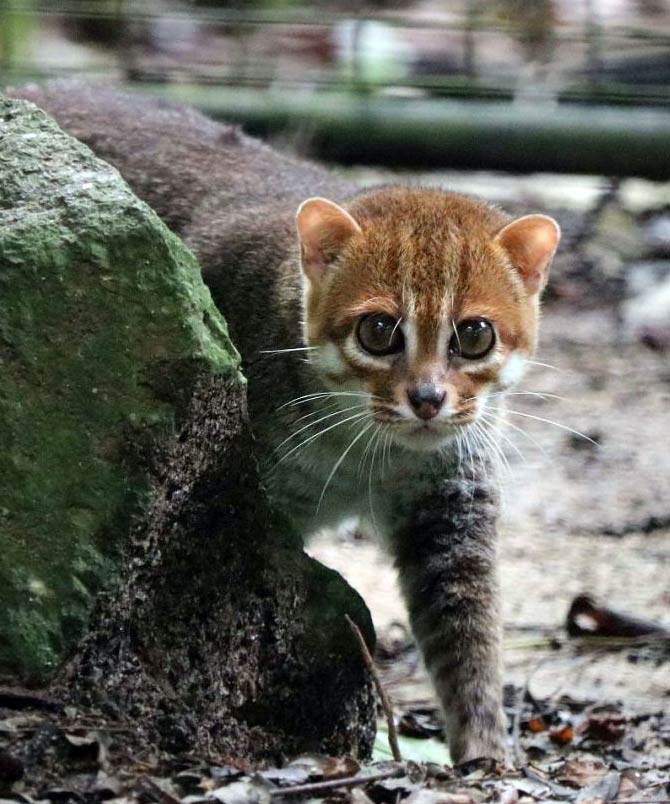
Lifestyle
The flat-headed cat inhabits lowland rainforests and wetlands. It is occasionally found on oil palm plantations as well. Its habitat is determined primarily by proximity to water – all observed individuals of this species have been located within 3 km (1.9 mi) of rivers, streams, or lakes.
For this predator, water serves not only as a source of food but also as a refuge. When threatened, the cat quickly seeks safety in water. It is an adept swimmer and diver, with one recorded individual swimming approximately 25 meters (82 feet) underwater.
All knowledge about the flat-headed cat’s lifestyle comes from very limited observations of wild individuals (mostly made recently using camera traps) or those living in captivity. The species is primarily active from dusk to dawn. In captivity, they are sometimes observed being active during the day, but this is not typical behavior for wild individuals.
Flat-headed cats are solitary animals. Their territories are usually quite large – females require up to 6 km² (2.3 mi²), while males need as much as 16–22 km² (6.2–8.5 mi²). They communicate using sounds similar to those of domestic cats: purring, hissing, and occasionally spitting.
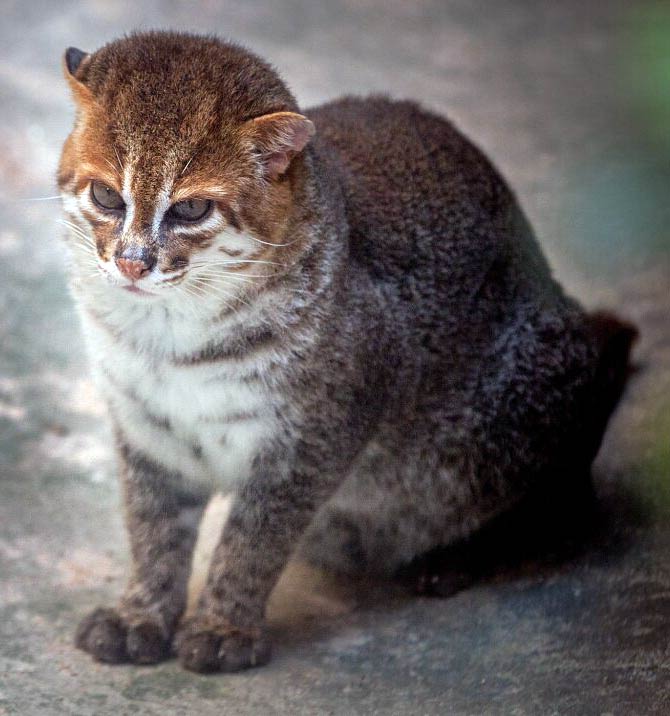
Diet
The flat-headed cat primarily feeds on fish, and it is exceptionally well-adapted for hunting them. Its superior stereoscopic vision helps it locate prey in water, while its small ears reduce water resistance. Additionally, its long, sharp teeth minimize the chance of a caught fish slipping away.
This predator also willingly eats amphibians and crustaceans. Unusually for a feline, it consumes fruits as well. The flat-headed cat “washes” its food in water, much like raccoons. A peculiar habit of this species is that it never eats its catch on the spot; instead, it carries the prey at least 2 meters (6.6 feet) away from where it was caught before consuming it.
This behavior is likely driven by a desire to distance the prey from the water – for example, a captured fish is less likely to escape back into the river if the cat drags it far from the shore. This habit has also been observed in captivity. Interestingly, the flat-headed cat does not hunt birds; there are no records of its tracks near poultry farms, nor has it ever been caught in traps set in such locations.
Another unusual trait of the flat-headed cat is that it almost never hunts on land. Even in captivity, these cats show little interest in mice unless the rodents are in water. Once a mouse enters the water, however, the cat immediately begins its hunt. A curious behavior observed in captivity is that flat-headed cats always “attack” their meal by ambushing it, leaping onto it suddenly.

Reproduction
All information about the reproduction of flat-headed cats comes from a single observation in the wild and three successful breeding cases in captivity. Nothing is known about their mating habits. It is believed that mating occurs in January and February, with a gestation period of 56 days. Female cats have four teats, suggesting that litters may contain up to four kittens, though no more than two have been born in captivity.
Kittens look very different from adults – their body proportions resemble those of “ordinary” domestic cats. Their fur is dark gray at birth and only develops the characteristic adult coloration after about a year. Kittens begin learning independence at one month old and reach sexual maturity at 15 months.
The lifespan of flat-headed cats in the wild is unknown, but in captivity, they can live up to 14 years.
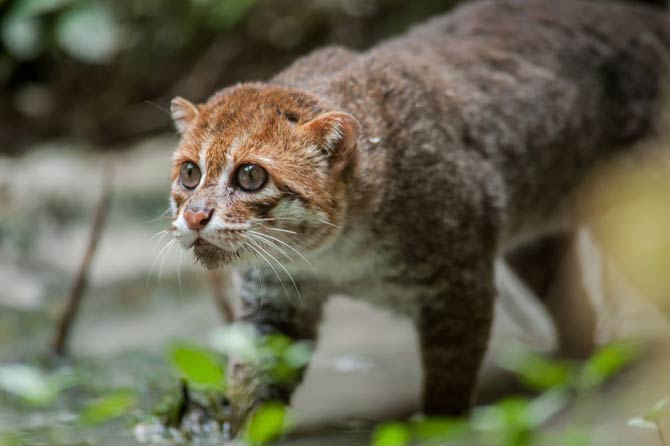
Flat-Headed Cat and Humans
Flat-headed cats were discovered in 1827 on Sumatra. Initially classified within the genus Felis, later studies in 1961 on skull structure and coloration revealed they share more characteristics with leopards than with domestic cats. This led to the creation of a separate genus, Prionailurus.
Nothing is known about their natural predators, though it is assumed that such elusive and excellent swimmers face few threats in adulthood. However, their habitat is under severe transformation. Tropical forests in their range are being cleared, wetlands drained, and mangroves cut down. These areas are being converted into plantations and farmland, while overfishing further reduces their food supply.
By 1985, the species was declared extinct in the wild. Fortunately, evidence of their survival was found just 10 years later. Despite this, flat-headed cats remain incredibly rare, with fewer than 2,500 individuals estimated to live in the wild.
Currently, over 70% of the primary habitats of the flat-headed cat (Prionailurus planiceps) are no longer suitable for its survival due to deforestation, water pollution, and a shortage of fish. Additionally, local residents unjustly consider it a pest and sometimes kill it, although this is becoming increasingly rare. Scientists estimate that if the situation does not improve, this cat could become extinct within the next 20 years.
At present, the flat-headed cat is under strict legal protection in all countries where it is found. Furthermore, the trade of its pelts is prohibited. These measures have resulted in the fur of this species becoming virtually nonexistent on the black market. There is some hope in the fact that traces of flat-headed cats have been discovered on palm plantations near rivers, suggesting they may be able to adapt to altered environments, which increases their chances of survival.
Despite all conservation efforts, this cat is still classified as critically endangered. Scientists believe that active measures are necessary to save it, including captive breeding programs. In Thailand, plans are underway to attempt cloning – genetic material from the flat-headed cat will be implanted into the egg cells of other cat species.
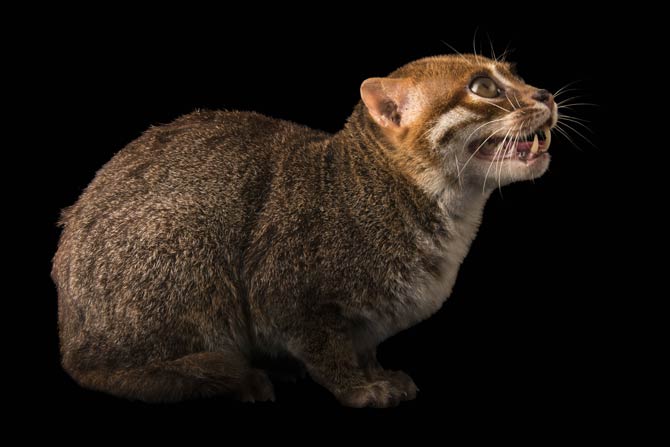
Detailed Data / Dimensions
Flat-headed cat (Prionailurus planiceps)
- Body length (excluding tail): 41–50 cm (16.1–19.7 in)
- Tail length: 13–15 cm (5.1–5.9 in)
- Height at the shoulder: approximately 33–40 cm (13.0–15.7 in)
- Body mass: 1.5–2.5 kg (3.3–5.5 lb)
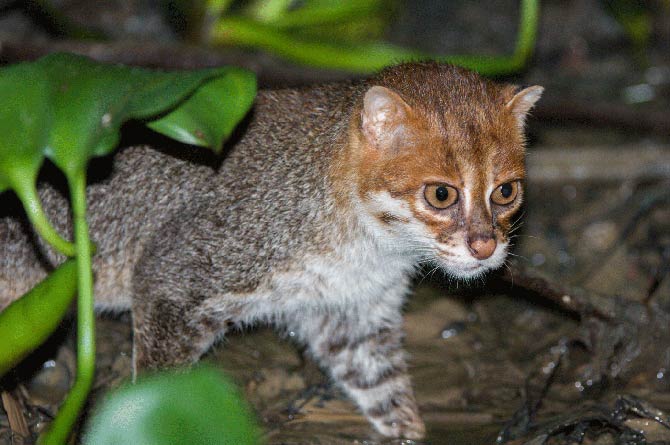
Flat-headed Cat – Interesting Facts
- The English name of the flat-headed cat (Prionailurus planiceps) is “Flat-headed Cat,” which refers to its distinctive flat skull shape.
- It is the only cat in the world known to consume plant-based food.
- Flat-headed cats enjoy swimming for fun and playing in the water.
- In captivity, when they see a person using a garden hose, they will eagerly run under the stream of water—quite the opposite behavior of most other cats!
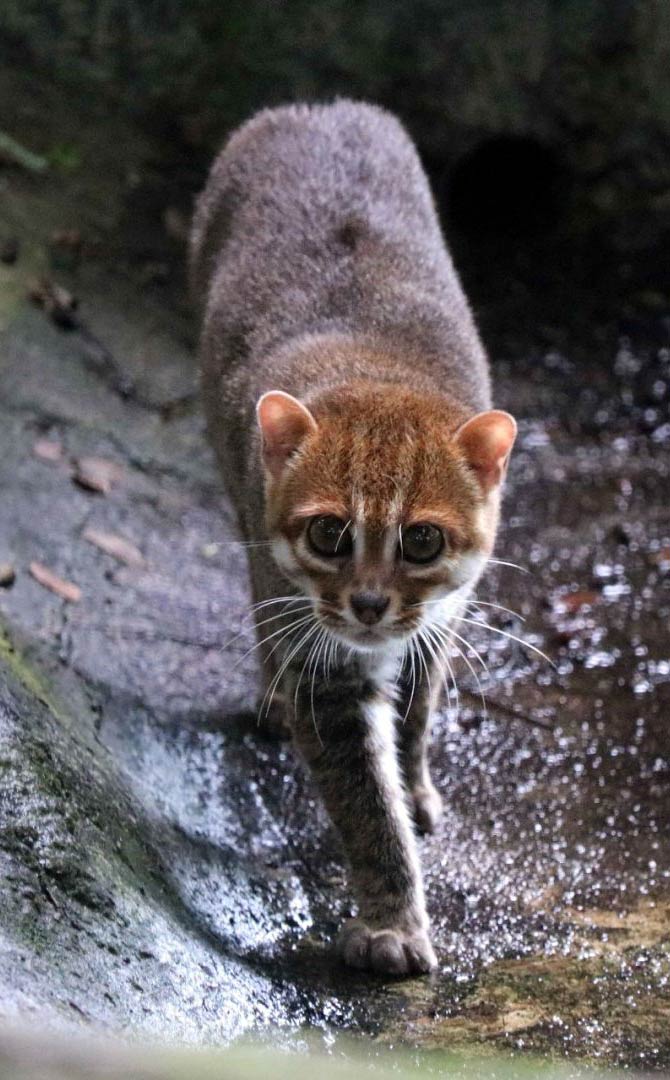
Recommended
- Tiger – the king of the jungle
- Siberian tiger
- Bengal tiger
- Sumatran tiger
- Indochinese tiger
- Malayan tiger
- South China tiger
- Tigers
- White tigers
- Lions
- White lions
- Lion vs tiger
- Liger
- Animal fights
- American lion
- European cave lion
- Smilodon – Saber-toothed tiger
- Fights of animals
- Big cats
- Black panther
- Leopard
- Snow leopard
- African Lion
- Fastest animals
- Fastest birds

